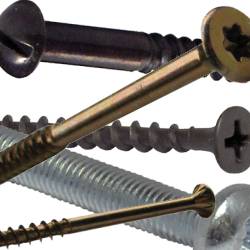Can Screws And Fixings Be Re-Used?

At a time when we are encouraged to recycle and re-use items as much as possible, and when single-use items are seen as wasteful in many circumstances, it is a valid question to ask whether screws and fixings can be re-used. Ultimately, what goes up must come down, so while we spend time putting up cupboards and shelves and assembling machinery and equipment, sometimes this work is dismantled and dis-assembled just as quickly and we are left with bags full of screws and fixings which to the naked eye look perfectly fine. So can we save a few quid and re-use them?
The general rule is that re-using screws and fixings is not recommended. There are a number of reasons for this, which we will look at shortly. However, strictly speaking it is okay to use nuts, bolts and screws for a second time if they have not exceeded their yield point. The yield point is the point at which the item doesn’t return to its original length when a load is removed. In this respect, a bolt, for example, acts a little like a spring.
But of course it is very hard to make this judgement with the naked eye, and while a screw or fixing may look perfectly fine, you have to consider what job it has been doing and whether you can guarantee the physical properties of it have not been compromised. Do you always know what forces or conditions a screw or fixing has previously been under? It is possible to look at a nut and bolt, and if the nut can be screwed onto a bolt for the entire thread length, then it may be okay to re-use, but then you need to make a number of other considerations too.
Reasons why screws and fixings should not be re-used
There are a number of reasons why screws and fixings are not recommended to be used for a second application, even if their appearance seems to be fine.
- Yield strength – the screw or fixing could have been torqued beyond its yield strength. Tension, shear and cyclic forces come from impact, load and vibration. These can all affect the yield strength of a screw or fixing and mean it may not be as strong, durable or secure as it was previously. These forces contribute to wear and tear and are not necessarily visible.
- Heat – if the screw or fixing has been exposed to extreme heat it can lose some of its strength and other physical properties.
- Corrosion – rust or chemical attack on a screw or fixing is much more visible and hence makes it easier to make a judgement on whether it should be used again.
- Coverage – if a screw or fixing has been covered in paint and/or lubricant it will not have the same physical qualities.
- Installation – was the screw or fixing correctly installed in the first place? Indirect tensioning – for example a screw secured at the wrong angle – or over-tightening can exert more pressure on a screw or fixing than it was designed to withstand. Again, this can physically weaken it, but this may not be visible to the naked eye.
- Mix and match – it is also not recommended to mix new and old nuts and bolts, because of all the issues we have listed here. So this means you shouldn’t use a new nut with an old bolt, or an old nut with a new bolt. Deformed threads won’t sit perfectly with new threads, and you may not be able to detect this, but it could lead to unstable or uneven joints.
- Applications – if a screw or fixing is needed for critical joints or applications it should not be re-used. Again, this is largely a judgement call, but is a case of carrying out a risk assessment on the consequences of damage or failure in terms of safety and cost.
- Product safety – it is possible that re-using screws and fixings may compromise the terms and conditions of a manufacturer’s guarantee for the assembly or erecting of some products. This could lead to insurance and public liability issues.
Should I re-use my screws and fixings?
In summary, we would not recommend the re-use of screws and fixings. There will always be an element of doubt about their performance and even in non-critical applications, you need the security and peace of mind that you have used the best possible materials for a particular job. Furthermore, there is a minimal cost saving in re-using screws and fixings and in most cases it is sheer convenience and because we can’t be bothered to purchase new ones, that we consider re-using old screws and fixings. New screws and fixings are guaranteed to be stronger and more durable and the cost of buying them will be much less than the potential costs of gambling on the use of old ones.